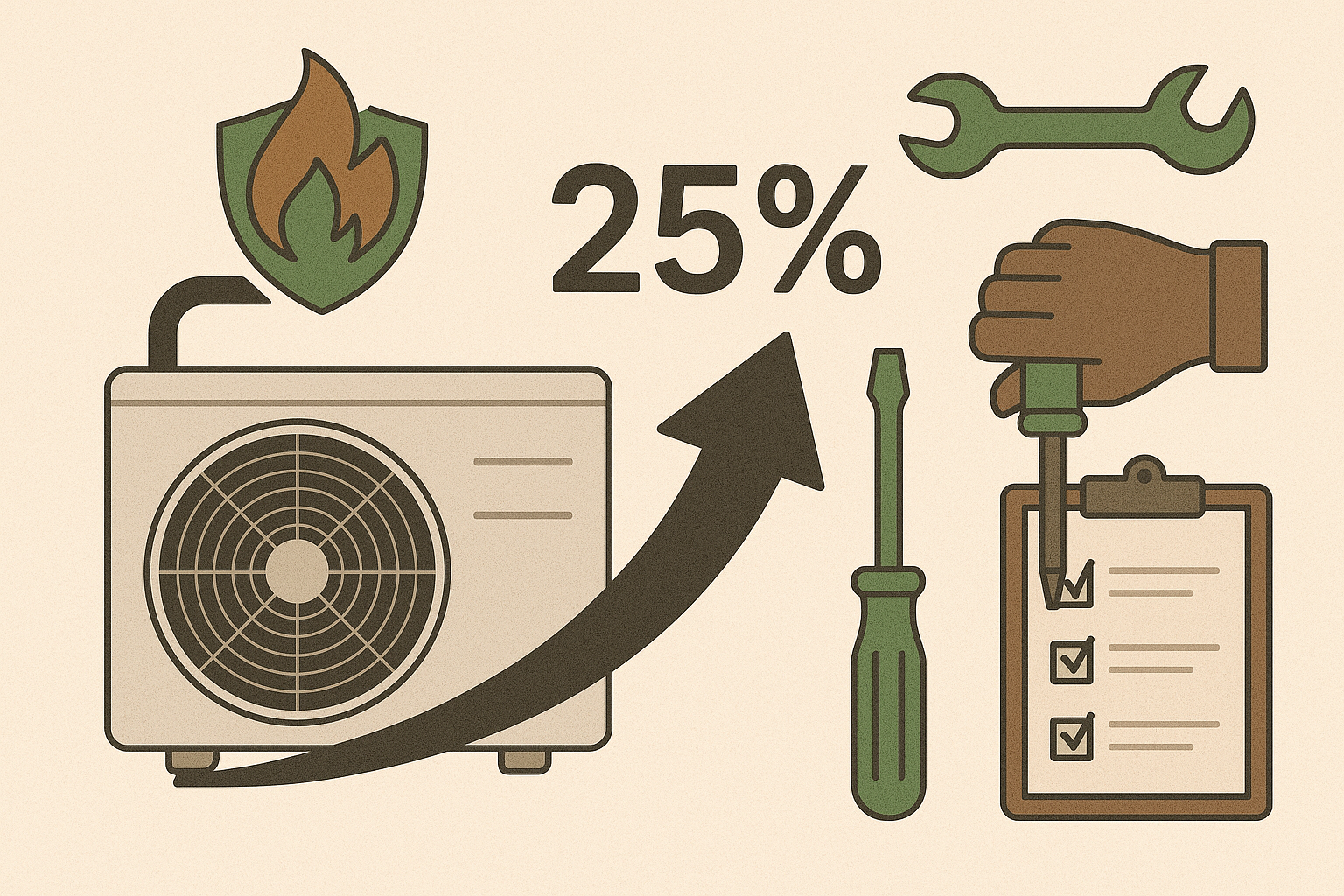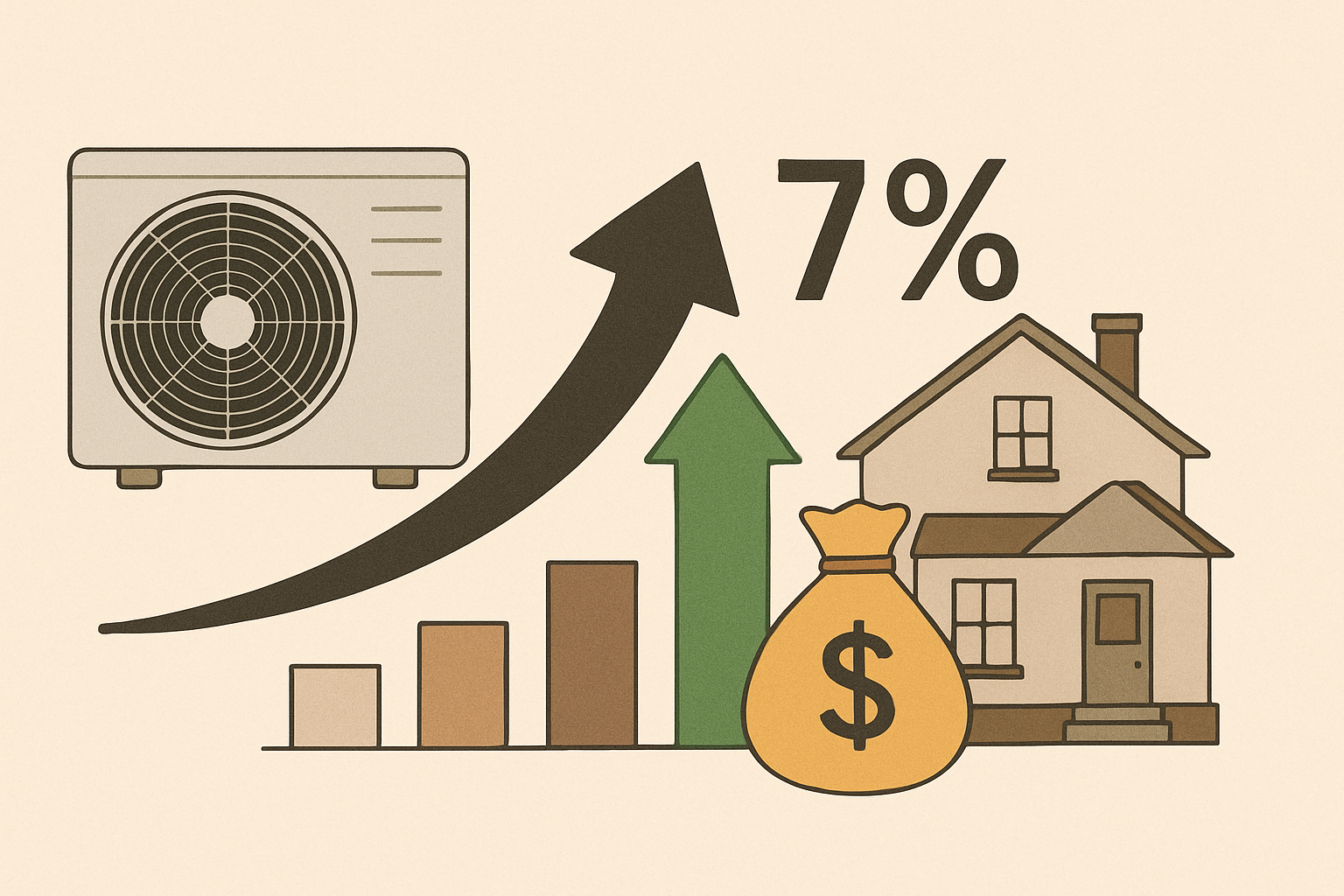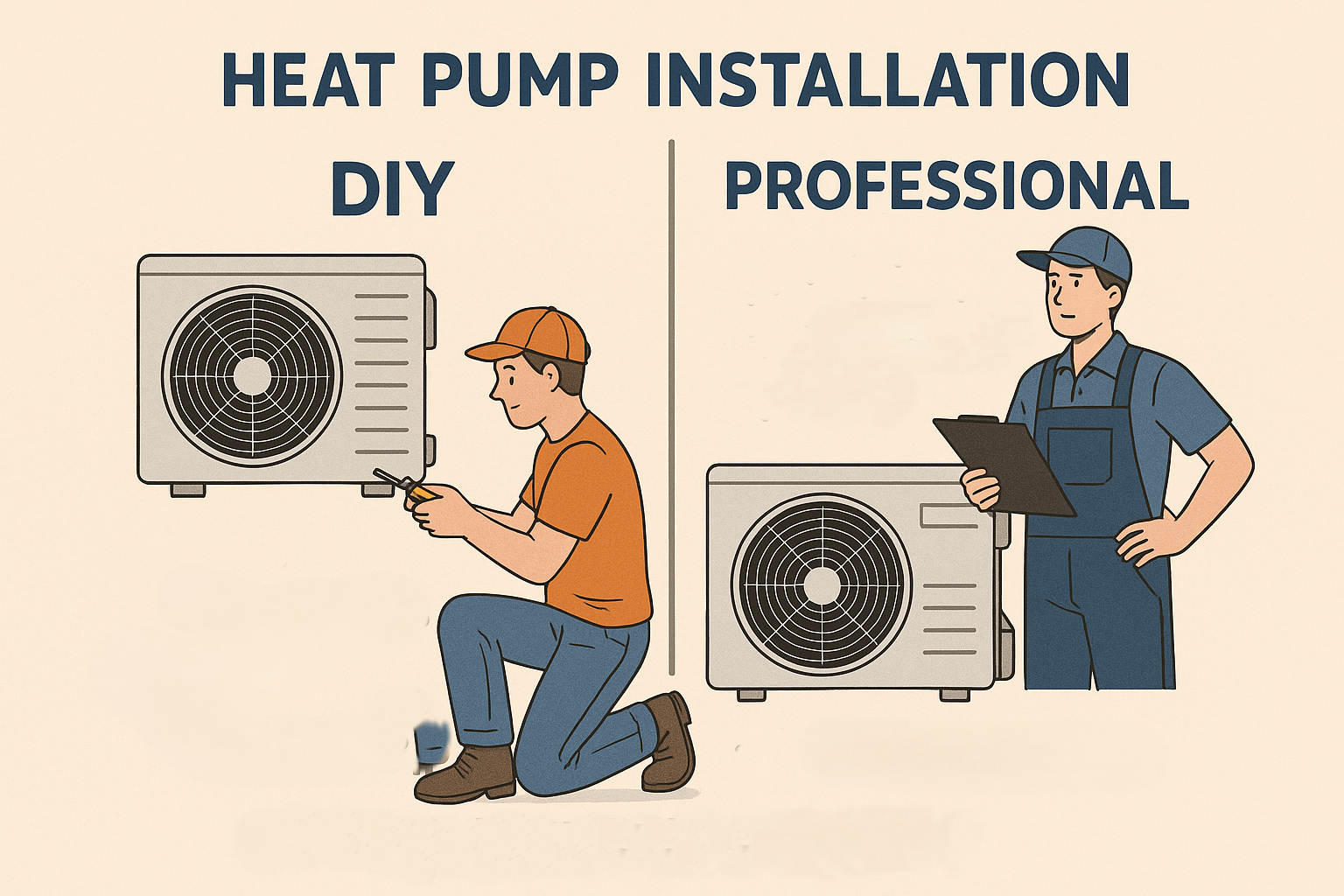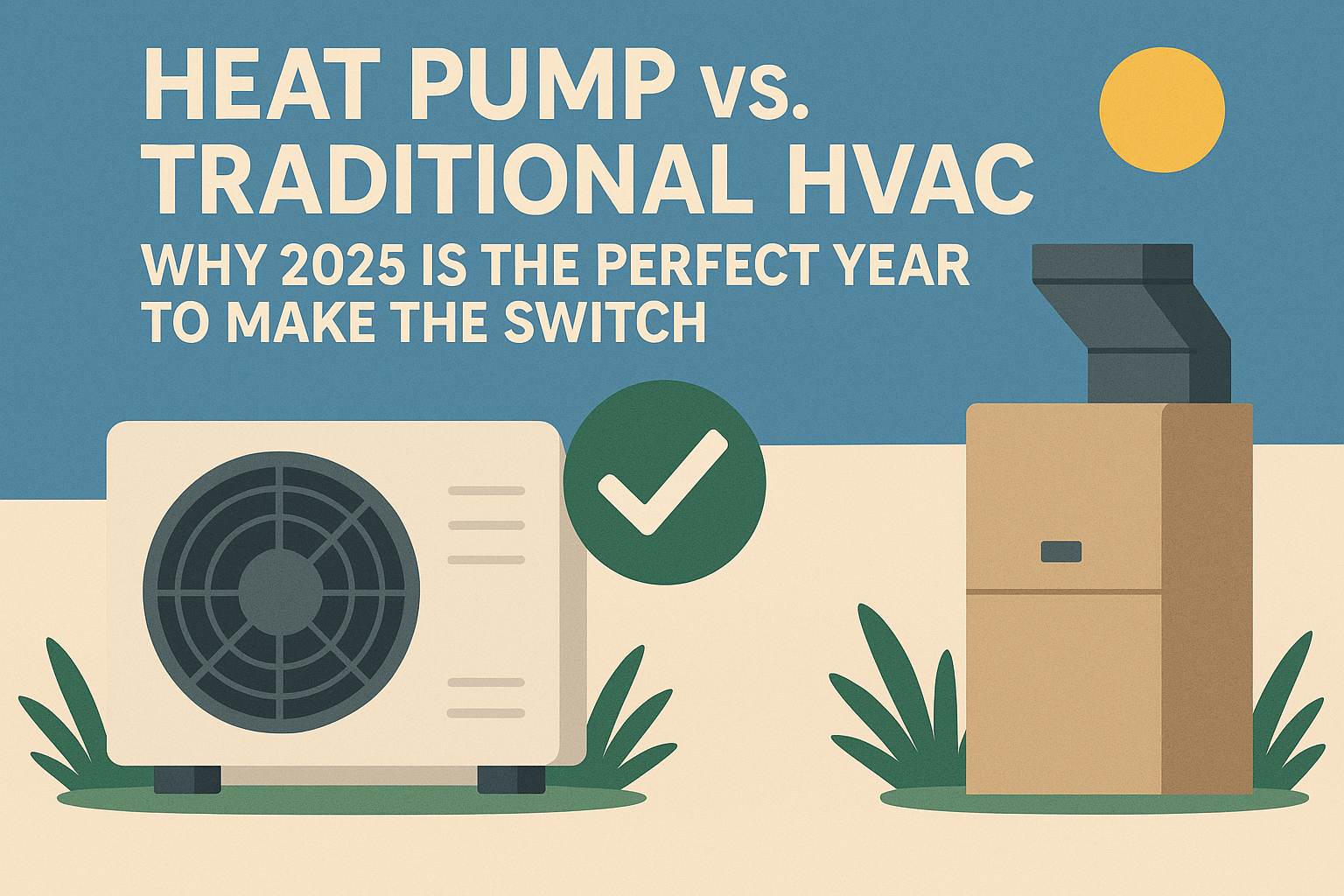Heat Pump Maintenance: Essential Tips for Homeowners to Maximize Efficiency and Lifespan
Your heat pump represents a significant investment in your home's comfort and energy efficiency. Unlike traditional HVAC systems that might sit dormant for months between seasons, heat pumps work year-round to keep your home comfortable. This continuous operation makes proper maintenance not just recommended but essential for optimal performance, efficiency, and longevity. This comprehensive guide will walk you through everything you need to know about maintaining your heat pump system.
Why Heat Pump Maintenance Matters
Before diving into specific maintenance tasks, it's important to understand why regular maintenance is so crucial for heat pump systems.
The Benefits of Regular Heat Pump Maintenance
Properly maintaining your heat pump delivers several significant benefits:
- Improved energy efficiency: Regular maintenance can improve efficiency by up to 25%, according to the U.S. Department of Energy
- Lower utility bills: A well-maintained heat pump uses less electricity to deliver the same comfort
- Extended equipment lifespan: Regular maintenance can add 3-5 years to your system's operational life
- Fewer breakdowns and repairs: Preventative maintenance catches small issues before they become expensive problems
- More consistent comfort: A properly maintained system delivers more even heating and cooling
- Maintained warranty coverage: Many manufacturers require regular maintenance to keep warranties valid
- Improved air quality: Clean filters and coils mean cleaner air circulating in your home
The Cost of Neglecting Maintenance
Conversely, neglecting heat pump maintenance can lead to:
- Reduced efficiency: Dirty coils and filters can reduce efficiency by 5-25%
- Higher energy bills: An inefficient system costs more to operate every month
- Premature system failure: Neglected heat pumps often fail years before their expected lifespan
- Expensive emergency repairs: Small issues that could have been caught during maintenance become major breakdowns
- Inconsistent heating and cooling: Poor maintenance leads to temperature fluctuations and comfort issues
- Voided warranty coverage: Manufacturers may deny warranty claims if regular maintenance hasn't been performed
DIY Heat Pump Maintenance Tasks
Many essential heat pump maintenance tasks can be performed by homeowners without specialized tools or knowledge. Here's a comprehensive guide to DIY heat pump maintenance.
Monthly Maintenance Tasks
These simple tasks should be performed monthly during periods of heavy use:
1. Check and Change Air Filters
Dirty filters restrict airflow, forcing your system to work harder and use more energy.
How to maintain your filters:
- Inspect filters monthly during heavy use periods
- Replace disposable filters when they appear dirty (typically every 1-3 months)
- Wash reusable filters according to manufacturer instructions
- Keep spare filters on hand for quick replacement
- Consider upgrading to higher MERV-rated filters for better air quality
2. Clear Debris Around Outdoor Unit
Your heat pump's outdoor unit needs unobstructed airflow to function efficiently.
How to maintain the outdoor unit area:
- Remove leaves, grass clippings, and debris from around the unit
- Clear snow accumulation during winter (but never use sharp objects on the coils)
- Ensure the unit remains level on its pad
- Maintain at least 2 feet of clearance around all sides
- Trim back vegetation that could restrict airflow
Seasonal Maintenance Tasks
These more involved tasks should be performed at the beginning of heating and cooling seasons:
1. Clean Outdoor Coils
The outdoor coils collect dirt and debris over time, reducing efficiency.
How to clean outdoor coils:
- Turn off power to the unit at the disconnect or breaker
- Gently remove larger debris by hand
- Use a soft brush to remove dirt from the fins
- Spray with a hose from the inside out (never use a pressure washer)
- For stubborn dirt, use a commercial coil cleaner following package directions
- Allow to dry completely before restoring power
2. Check and Clean Condensate Drain
A clogged condensate drain can cause water damage and humidity issues.
How to maintain the condensate drain:
- Locate the condensate drain line (typically a PVC pipe)
- Turn off the system
- Remove any visible blockages from the drain opening
- Flush with distilled white vinegar or hydrogen peroxide
- For persistent clogs, use a wet/dry vacuum at the end of the drain line
3. Clean Supply and Return Registers
Dusty registers restrict airflow and distribute dust throughout your home.
How to clean registers:
- Remove register covers from walls or floors
- Vacuum dust and debris from the registers and visible ductwork
- Wipe register covers with a damp cloth
- Ensure registers remain unblocked by furniture or curtains
4. Inspect Refrigerant Lines
The insulated lines connecting your indoor and outdoor units should remain intact.
How to check refrigerant lines:
- Inspect the foam insulation covering the refrigerant lines
- Look for damaged, missing, or deteriorated sections
- Replace damaged insulation to prevent energy loss
- Secure any loose sections with UV-resistant tape designed for refrigerant lines
Seasonal Operation Best Practices
How you operate your heat pump seasonally can significantly impact its performance and longevity.
Winter Operation Tips
- Avoid frequent temperature adjustments: Set it and forget it rather than constantly adjusting the thermostat
- Use "heat" mode rather than "auto": This prevents unwanted mode switching
- Keep outdoor unit clear of snow and ice: But never use sharp objects that could damage coils
- Don't panic about steam during defrost cycles: This is normal operation
- Consider a heat pump cover for the top only: Never fully cover the sides of the unit
Summer Operation Tips
- Set reasonable temperature expectations: Heat pumps typically cool to about 20 degrees below outdoor temperature
- Use ceiling fans to enhance cooling effect: This allows for higher thermostat settings
- Close blinds and curtains during peak sun hours: Reduces cooling load
- Avoid blocking indoor vents: Ensures proper airflow throughout your home
- Consider a programmable or smart thermostat: Optimizes operation based on your schedule
Professional Heat Pump Maintenance
While DIY maintenance is important, professional maintenance is equally essential for optimal performance and longevity. Professional technicians have the tools, training, and expertise to perform more complex maintenance tasks.
When to Schedule Professional Maintenance
Most experts recommend professional maintenance:
- Once per year for heating-only or cooling-only heat pumps
- Twice per year for year-round heat pump systems (spring and fall)
- Before extreme weather seasons in your region
- After any major weather event that might have affected the outdoor unit
What Professional Maintenance Should Include
A comprehensive professional maintenance visit should include:
System Inspection and Testing
- Checking refrigerant levels: Ensuring proper charge for optimal efficiency
- Testing electrical components: Measuring voltage and current draw
- Inspecting ductwork: Checking for leaks, damage, or disconnections
- Examining thermostat operation: Verifying proper calibration and function
- Testing safety controls: Ensuring all safety features function correctly
- Checking defrost controls: Verifying proper defrost cycle operation
- Inspecting reversing valve: Ensuring proper switching between heating and cooling
System Cleaning and Lubrication
- Cleaning indoor and outdoor coils: Using specialized cleaning solutions
- Lubricating motors: Reducing friction and wear on moving parts
- Cleaning blower assembly: Removing dust and debris from blower wheel and housing
- Flushing condensate drain system: Preventing clogs and water damage
- Cleaning or replacing filters: Ensuring proper airflow
System Adjustments and Repairs
- Tightening electrical connections: Preventing electrical issues and fire hazards
- Adjusting blower components: Optimizing airflow for efficiency
- Straightening bent coil fins: Improving heat transfer efficiency
- Addressing minor issues: Fixing small problems before they become major repairs
- Updating system software: For systems with smart controls
Choosing a Qualified HVAC Professional
Not all HVAC contractors have specific expertise with heat pumps. When selecting a professional for maintenance:
- Look for NATE certification: North American Technician Excellence certification indicates specialized training
- Check for manufacturer certification: Many manufacturers offer training specific to their equipment
- Ask about heat pump experience: Ensure they regularly work with your type of system
- Verify proper licensing and insurance: Protects you in case of accidents or damage
- Read reviews from other heat pump owners: Look for contractors with positive feedback specifically about heat pump service
Seasonal Maintenance Schedule
Following a regular maintenance schedule helps ensure your heat pump operates at peak efficiency year-round. Here's a comprehensive seasonal maintenance calendar:
Spring Maintenance (March-May)
- Schedule professional maintenance to prepare for cooling season
- Clean or replace air filters
- Clear debris from around outdoor unit
- Clean outdoor coils
- Check and clean condensate drain
- Inspect refrigerant lines and insulation
- Test cooling mode operation
- Clean supply and return registers
- Check thermostat operation and programming
Summer Maintenance (June-August)
- Check and replace air filters monthly
- Keep area around outdoor unit clear of debris
- Ensure condensate drain remains clear
- Monitor system performance during peak heat
- Trim vegetation around outdoor unit
- Check for unusual noises or operation
Fall Maintenance (September-November)
- Schedule professional maintenance to prepare for heating season
- Clean or replace air filters
- Clear leaves and debris from around outdoor unit
- Clean outdoor coils
- Check supplemental heating elements if applicable
- Test heating mode operation
- Inspect insulation on refrigerant lines
- Check thermostat operation and update programming for heating season
Winter Maintenance (December-February)
- Check and replace air filters monthly
- Keep snow and ice clear from outdoor unit
- Ensure nothing blocks airflow to outdoor unit
- Monitor defrost cycle operation
- Check for unusual noises or operation
- Maintain consistent thermostat settings
Troubleshooting Common Heat Pump Issues
Even with regular maintenance, you may occasionally encounter issues with your heat pump. Here are some common problems and their potential solutions:
Heat Pump Not Heating or Cooling Properly
Possible causes and solutions:
- Dirty air filters: Replace or clean filters
- Thermostat issues: Check settings, batteries, and calibration
- Airflow restrictions: Clear debris from outdoor unit and ensure vents are open
- Low refrigerant: Requires professional service
- Reversing valve problems: Requires professional service
System Running Constantly
Possible causes and solutions:
- Undersized system: May require professional assessment
- Extreme weather conditions: Normal during temperature extremes
- Dirty coils or filters: Clean or replace as needed
- Refrigerant issues: Requires professional service
- Thermostat problems: Check placement and settings
Unusual Noises
Different noises indicate different problems:
- Rattling: Loose panels or debris in outdoor unit
- Grinding: Motor bearing issues (requires professional service)
- Hissing: Possible refrigerant leak (requires professional service)
- Clicking: Normal during startup/shutdown, but constant clicking may indicate electrical issues
Ice Buildup on Outdoor Unit
Possible causes and solutions:
- Normal defrost cycle: Steam and some ice is normal in winter
- Excessive ice buildup: May indicate airflow problems or refrigerant issues
- Defrost cycle failure: Requires professional service
- Drainage problems: Ensure unit is properly elevated and draining
When to Call a Professional
While many maintenance tasks can be handled by homeowners, certain situations require professional attention:
- Electrical issues: Any problem involving electrical components
- Refrigerant problems: Leaks, recharging, or adjustment
- Unusual noises that persist: Especially grinding or squealing
- Complete system failure: No operation in any mode
- Frequent cycling: System turns on and off repeatedly
- Water leaks: Beyond normal condensation
- Burning smells: Indicates potential electrical problems
- Significantly reduced airflow: Despite clean filters and unblocked vents
Heat Pump Maintenance Costs
Understanding the costs associated with heat pump maintenance helps you budget appropriately:
DIY Maintenance Costs
- Air filters: $10-$30 each, depending on size and quality
- Coil cleaner: $15-$25 per bottle
- Fin comb: $10-$15 for straightening bent coil fins
- Condensate tablets: $10-$15 for preventing algae growth
Professional Maintenance Costs
- Single maintenance visit: $150-$200 on average
- Annual maintenance plan: $150-$300, often including priority service and discounts on repairs
- Comprehensive service contracts: $300-$500 annually, may include some repairs and parts
Cost-Benefit Analysis
The investment in regular maintenance typically pays for itself through:
- Energy savings: 10-25% lower operating costs
- Avoided repairs: The average repair costs $300-$600
- Extended equipment life: Replacing a heat pump system costs $4,000-$8,000
- Maintained efficiency: Prevents gradual performance decline
Conclusion
Proper heat pump maintenance is not just about preventing problems—it's about optimizing performance, maximizing efficiency, and extending the life of your investment. By following a regular maintenance schedule that combines DIY tasks with professional service, you can enjoy reliable comfort, lower energy bills, and fewer unexpected repairs.
Remember that your heat pump works year-round to keep your home comfortable, so it deserves year-round attention. The small investment of time and money in regular maintenance will pay dividends in performance, efficiency, and longevity.
FAQs About Heat Pump Maintenance
Q: How often should I change my heat pump's air filter? A: For standard 1-inch filters, check monthly and replace every 1-3 months depending on usage and air quality. Thicker filters (3-4 inches) may last 3-6 months.
Q: Can I perform all heat pump maintenance myself? A: While many maintenance tasks are DIY-friendly, professional maintenance is still recommended annually or bi-annually for tasks requiring specialized tools and expertise.
Q: Will maintenance prevent all heat pump problems? A: Regular maintenance significantly reduces the risk of problems but cannot eliminate all potential issues. However, it will catch many problems early when they're less expensive to fix.
Q: How long should my heat pump last with proper maintenance? A: With regular maintenance, most heat pumps last 15-20 years, compared to 10-15 years with minimal maintenance.
Q: Is professional maintenance worth the cost? A: Yes. Professional maintenance typically costs $150-$200 annually but can save hundreds in energy costs and thousands in premature replacement costs.
**Q: W (Content truncated due to size limit. Use line ranges to read in chunks)



